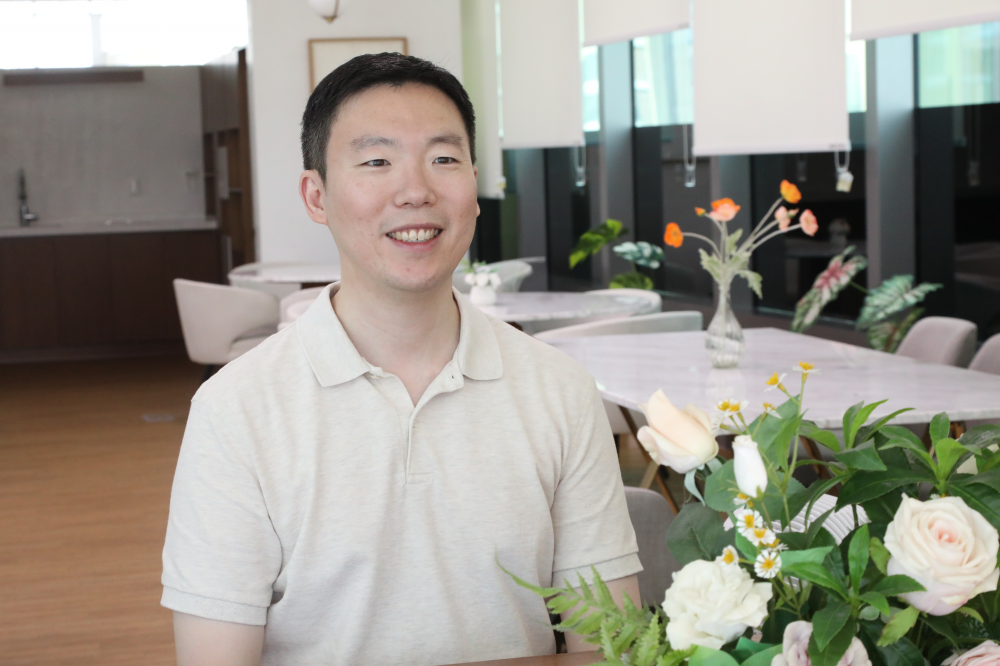News
KUBS News
[Interview] Professor Baek Jung Kim Wins the SK Research Award

In 2025, Professor Baek Jung Kim of Korea University Business School received the prestigious SK Research Award for his co-authored paper, “The Closing-the-Gap Effect: Joint Evaluation Leads Donors to Help Charities Farther from Their Goal” (co-authors: Rishad Habib, David J. Hardisty, Katherine White), published in the Journal of Marketing Research. This study empirically demonstrated that when donors evaluate multiple charities together, they perceive relative need more clearly based on how close each organization is to its fundraising goal. As a result, donors tend to give more to charities that are farther from reaching their target. However, when organizations are evaluated individually, this effect diminishes or even reverses. The pattern also holds when the differences between organizations are small or when for-profit entities are included. Using 13 experiments and over 10,000 real crowdfunding records, the research provides practical insights for donation strategies and fundraising platform design.
Q1. First of all, congratulations on winning the SK Award! How do you feel about receiving this honor?
A1. I am honored to receive the SK Award. It’s particularly meaningful to be recognized for a collaborative project with such outstanding behavioral researchers. This award also serves as a reminder of my responsibility to continue pursuing impactful research in the future.
Q2. Could you briefly introduce your award-winning research?
A2. This paper demonstrates that when donors evaluate multiple charities or nonprofit organizations in a joint context, the relative level of need—measured by how close each organization is to reaching its fundraising goal—becomes more salient. In such comparative contexts, donors tend to donate more to organizations that are further from meeting their goal. Interestingly, however, when organizations are evaluated separately, this perceived relative need is less salient , and the effect becomes insignificant. These findings offer insights into how charitable giving is shaped by the context in which donors assess organizations.
Q3. What led you to pursue this line of research?
A3. This project was especially meaningful to me because it was a collaborative study conducted with fellow professors in the field of consumer behavior. By combining experimental methods with real-world donation data, we had a valuable opportunity to gain a deeper understanding of charitable giving to nonprofit organizations. I was particularly happy by how this approach allowed us to draw causal insights into donation behavior.
Q4. What kind of social or industry impact do you think your research could have?
A4. As mentioned earlier, I believe this study is particularly meaningful in that it offers new insights into charitable giving—insights that have not been sufficiently addressed in previous research—by employing a combination of diverse research methodologies. These findings have the potential to make practical contributions in real-world contexts, such as informing donation strategies or guiding the design of crowdfunding platforms and other tools used by nonprofit organizations and social enterprises.
Q5. Could you share your future research interests or upcoming plans?
A5. I have maintained a strong interest in the diverse behavioral patterns that emerge when consumers adopt and continue to use online platforms. Building on this line of inquiry, I intend to conduct research that quantitatively analyzes consumer behavior—particularly by employing a variety of methodological approaches—to better understand how these behaviors evolve over time.
Q6. Do you have a message for junior researchers or students?
A6. I believe it is essential to cultivate the ability to think deeply and independently about any topic. Whether you’re reading a news article, a book, or an academic paper, I encourage you to keep engaging with topics that spark your curiosity and to reflect on them with persistence. This kind of sustained intellectual effort can serve as the starting point for meaningful research and ultimately help you form your own unique perspective.
Below is a summary of Professor Baekjung Kim’s paper “The Closing-the-Gap Effect: Joint Evaluation Leads Donors to Help Charities Farther from Their Goal”
This research investigates how donors make charitable decisions, particularly when they evaluate charities or nonprofit organizations in a joint context. The findings suggest that in such joint evaluations, the relative difference in how close each charity is to reaching its fundraising goal becomes more salient. As a result, donors tend to contribute more to charities that are farther from their fundraising goal, as they appear to be in greater need.
In contrast, when charities are evaluated individually, where donors assess one charity at a time, this comparative context is absent, and the effect either disappears or reverses. The same holds true when differences in fundraising progress are minimal or when for-profit organizations are included—both cases where relative need becomes less salient, leading to different giving patterns.
The study is supported by six pre-registered experiments, seven follow-up studies, and an analysis of over 10,000 real-world crowdfunding donation records, providing robust empirical support. These insights offer practical implications for developing more effective fundraising strategies and designing donation platforms that can better encourage charitable giving.


